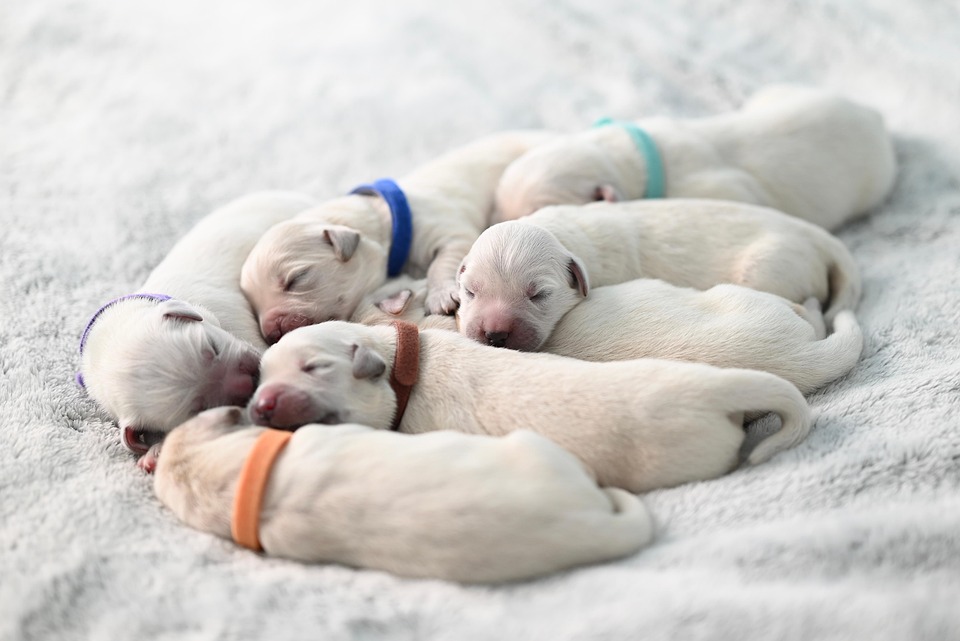
Welcoming a new baby into your home is an exciting and transformative time. If you are a dog owner, this period also involves ensuring a smooth transition for your furry friend as they adapt to the newest family member. Dogs are renowned for their loyalty and affection, and with the right preparation, they can form a wonderful bond with your baby. However, introducing dogs to babies requires careful planning, patience, and understanding of both your dog’s needs and your baby’s safety. This comprehensive guide provides safe and effective tips to help you navigate this process successfully.
Understanding Your Dog’s Behavior
Before introducing your dog to your baby, it’s crucial to understand your dog’s personality and behavior. Different breeds and individual dogs have varying temperaments. Some dogs are naturally gentle and calm, while others may be more excitable or anxious. Observing your dog’s reactions to new stimuli, guests, or changes in their environment can provide valuable insights into how they might respond to a baby.
Assessing Temperament
Consider your dog’s temperament and behavior in various situations. Do they become anxious in noisy environments? Are they protective or possessive of their space or toys? Understanding these aspects will help you anticipate potential challenges and prepare accordingly.
Training and Socialization
Training and socialization are essential components of preparing your dog for a baby. Reinforce basic commands such as “sit,” “stay,” “leave it,” and “down.” If your dog isn’t already trained in these areas, consider enrolling in obedience classes or working with a professional trainer. Socialization involves exposing your dog to different environments, people, and experiences, helping them become more adaptable and less fearful of changes.
Preparing Your Dog for the Baby’s Arrival
Preparation is key to ensuring a smooth introduction. Here are steps you can take before the baby arrives:
Introduce Baby Scents
A few weeks before the baby arrives, introduce your dog to baby-related scents. Use baby lotions, powders, or a worn baby blanket to familiarize your dog with the new smells. This helps them associate these scents with positive experiences.
Adjust Routine Gradually
Changes in routine can be stressful for dogs. Gradually adjust your dog’s daily routine to reflect the changes that will occur after the baby’s arrival. If walks or feeding times will change, start implementing these adjustments a few weeks in advance.
Create a Safe Space
Designate a safe and comfortable space for your dog where they can retreat if they feel overwhelmed. This can be a crate, a specific room, or a cozy corner with their bed and toys. Ensure this space is off-limits to the baby to give your dog a place of their own.
The First Introduction
The initial introduction between your dog and baby is a pivotal moment. Here are some steps to ensure it goes smoothly:
Stay Calm and Positive
Dogs are highly perceptive and can pick up on your emotions. Stay calm, positive, and relaxed during the first introduction. Your demeanor will reassure your dog that everything is okay.
Controlled Environment
Choose a quiet, controlled environment for the introduction. Have another adult present to assist if needed. Keep your dog on a leash initially to maintain control and prevent any sudden movements.
Let the Dog Approach
Allow your dog to approach the baby at their own pace. Do not force interaction. Let them sniff and investigate while keeping the baby securely in your arms or a baby carrier. Reward your dog with treats and praise for calm behavior.
Observe Body Language
Watch your dog’s body language closely. Signs of stress or discomfort, such as whining, pacing, or avoiding eye contact, indicate that your dog might need more time to adjust. In such cases, give them space and try the introduction again later.
Building a Positive Relationship
After the initial introduction, focus on fostering a positive relationship between your dog and baby:
Supervised Interactions
Always supervise interactions between your dog and baby. Never leave them alone together, even if your dog seems trustworthy. Accidental bumps or sudden movements can startle both the dog and baby.
Reward-Based Training
Continue using reward-based training to reinforce positive behavior. Praise and reward your dog when they behave calmly around the baby. This creates a positive association with the baby’s presence.
Incorporate the Dog into Baby Activities
Include your dog in baby-related activities to help them feel involved. For example, take your dog along for walks with the stroller or let them sit nearby during feeding times. This inclusion fosters a sense of belonging and reduces jealousy.
Addressing Challenges
Despite your best efforts, challenges might arise during the adjustment period. Here are some common issues and tips for addressing them:
Jealousy or Attention-Seeking Behavior
Dogs may exhibit jealousy or attention-seeking behavior if they feel sidelined. Ensure each family member spends quality time with the dog, providing them with attention and playtime.
Barking or Over-Excitement
Some dogs may bark excessively or become overexcited around the baby. Use positive reinforcement techniques to encourage calm behavior. Additionally, provide mental stimulation and exercise to help manage excess energy.
Anxiety or Fear
If your dog shows signs of anxiety or fear around the baby, consult a professional dog trainer or behaviorist. They can provide tailored strategies to address these issues effectively.
Long-Term Bonding
Building a strong, lasting bond between your dog and baby requires ongoing effort and care:
Teach Gentle Interaction
As your baby grows, teach them how to interact gently with the dog. Show them how to pet softly and avoid pulling on the dog’s ears or tail. This helps prevent accidental harm and promotes mutual respect.
Consistency and Routine
Maintain consistency in routines for both your dog and baby. Consistent feeding, play, and rest times help both adapt to the changes in the household.
Celebrate Milestones Together
Celebrate milestones such as birthdays or achievements with your dog and baby together. This reinforces the idea that they are part of the same family unit and strengthens their bond.
Conclusion
Introducing a dog to a new baby can be a rewarding experience with the right preparation and approach. By understanding your dog’s behavior, preparing for the baby’s arrival, and fostering positive interactions, you can help create a harmonious environment for both your dog and baby. Remember that patience, consistency, and love are key to building a strong bond that will last a lifetime. With these safe and effective tips, you can ensure that your dog becomes a cherished companion and protector for your newest family member.
#ChatGPT assisted in the creation of this article.








